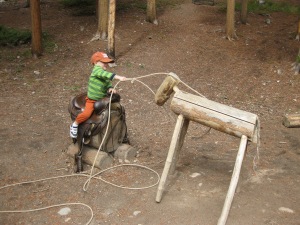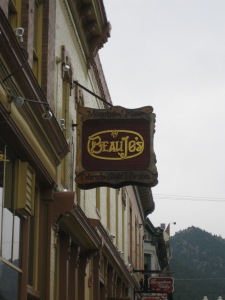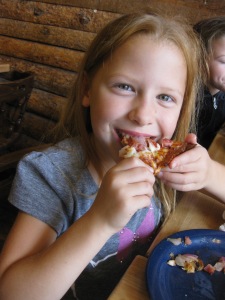My dear friend, Rose, recently read the book “Wheat Belly” by William Davis. She was wonderful and wrote a review of the book. It was originally posted on her blog, but she was nice and let me repost it. 🙂 Thank you, Rose, for your work on this! Below is her review:
“I don’t know if I would really call this a book review. I guess I just don’t know how to define book review. I read this book – and here are some of my thoughts and findings. I think everyone should read this – if they want to learn about today’s wheat and how the government has changed it over the past 30 years.
“Eliminating wheat may be inconvenient, but it is certainly not unhealthy.” – Wheat Belly by William Davis
Okay, last week I finished reading Wheat Belly by William Davis. I am amazed at the amount of information I learned from this book. I read it cover to cover – taking time to reread things that flew over my head. I love to read, but when reading information and statistics, I get a little bit lost.
I think this is an excellent resource. I really believe the information is valuable. Throughout my reading it, I would take screen shots of sections with my phone and text them to people whom I thought would find the information valuable. Some people did not like this, but one person, whom I am shocked to admit is my husband, was fascinated by the information I sent him.
Let’s start out by saying that the wheat of today is not the wheat from 100 years ago. It’s not the wheat from 50 years ago (or my parents’ childhood). Heck, it’s not even the wheat from when I was a little girl. Wheat today is actually a hybrid version of the wheat that our ancestors relied on as a food source.
First of all, it ain’t wheat. It’s the product of 40 years of genetics research aimed at increasing yield-per-acre. The result is a genetically-unique plant that stands 2 feet tall, not the 4 1/2-foot tall “amber waves of grain” we all remember. The genetic distance modern wheat has drifted exceeds the difference between chimpanzees and humans. If you caught your son dating a chimpanzee, could you tell the difference? Of course you can! What a difference 1% can make. But that’s more than modern wheat is removed from its ancestors. (http://www.wheatbellyblog.com/2011/07/wheat-belly-frequently-asked-questions/)
The first thing I was shocked to learn about today’s wheat is that “eating two slices of whole wheat bread can increase your blood sugar more than 2 tablespoons of pure sugar cane” Wheat Belly by William Davis – back cover. This fact appalls me. It also explains why people who are diabetic and who cut out sugar and increase their “whole grain” intake are overweight and continue to be overweight regardless of what they do to their diet. The other information amazes me as well. My husband struggles with his weight. He has since right before we got married. We switched everything we eat to “whole wheat” early in our marriage because we have been taught that as long as we are eating “whole wheat” we are healthy and would lose weight and prevent a ton of illnesses. Even in doing so, I noticed that Stephen is always eating late at night. He isn’t eating “bad” foods. He makes a few pieces of toast, has an apple with peanut butter, counts out a serving of chips, etc. But he can’t seem to conquer his night time cravings and therefore suffers from acid reflux and excessive snoring amongst a few other “issues” he has. Wheat Belly addresses this and suggests to remove wheat from your diet for 6 weeks. Stephen is on board so this week – now that the craziness of the month is over – I am on a mission to create a wheat free menu for the next six weeks for our family. I am eager to see what happens.
All in all, I think the idea of removing wheat is a good one. Of course, people are wondering what will we eat? This is what we will enjoy – real, natural foods such as eggs, raw nuts, plenty of vegetables, fish, fowl, and meats. I am able to use healthy oils – olive and coconut liberally.
I’ve been trying to live a Paleo lifestyle, and it hasn’t been the easiest thing to do. So I have had my fair share of “gluten free” foods. I don’t buy gluten-free processed foods, but when I go out to eat, if there is a “gluten free” option, I usually try it. It is important to remember – and Wheat Belly points out that “Gluten Free” processed foods are just that – they are processed foods. Don’t fall for the “GF” label – if it comes in a box and is labeled GF, it is still processed foods that contain ingredients that you cannot pronounce and more than likely has corn syrup and sugar in it. Taking wheat out of your diet and replacing it with processed foods is not going to make you “all better.” Taking wheat out of your diet and replacing it with beautiful, whole fruits and veggies and meats and eggs will make a huge difference.
Now the only thing about the book that I found really interesting and a bit off the top is that the author starts off with “Remove wheat from your diet – it is the worst of the worst carbohydrates. But other carbohydrates can also be problem sources, as well as . . .” (Wheat Belly, Davis 204). Then he goes on to say “don’t replace wheat with GF foods from the store.” After that, he goes a little over the top in my opinion – and I understand why because he’s trying to prevent diabetes, but he closes with “If you wish to roll back the appetite-stimulating, insulin distorting, and small LDL—triggering effects of foods beyond wheat , or if substantial weight loss is among your health goals, then you should consider reducing or eliminating the following foods in addition to wheat…” (Wheat Belly, Davis 204). Are you ready??
Cornstarch, corn meal, all snack foods, desserts, rice, potatoes, legumes, fruit juice and soft drinks, dried fruit and other grains as well as FRUIT.
Yep – he suggests eliminating all the above foods (and that means foods that contain those foods) and then gives you the suggestion of eating meats, raw nuts, good oils, dairy (LOTS OF DAIRY) and veggies. And only some fruits – berries are the fruits that Davis recommends you consuming avoiding bananas, mangoes, papayas and pineapple should be limited if not eliminated from your diet because of sugar content.
I do think that eliminating wheat from anyone’s diet, especially someone who has an addiction to it like my husband would benefit from it. The gut issues described in this book – celiac, ulcerative colitis – the weird ailments that are caused from wheat – insomnia, certain ADD/ADHD/Autism diagnosis – and even the fact that “whole wheat” is a leading contributor to diabetes, especially Type 2 diabetes. The effects of wheat have been shown in study after study.
I also fully believe that there is a cycle of hunger after eating wheat which is why one must eat so much throughout the day. The first thing I noticed when removing wheat and grains from my diet is that I wasn’t hungry:
Recall that people who are wheat-free consume, on average, 400 calories less per day and are not driven by the 90-120 minute cycle of hunger that is common to wheat. It means you eat when you are hungry and you eat less. It means a breakfast of 3 eggs with green peppers and sundried tomatoes, olive oil, and mozzarella cheese for breakfast at 7 am and you’re not hungry until 1 pm. That’s an entirely different experience than the shredded wheat cereal in skim milk at 7 am, hungry for a snack at 9 am, hungry again at 11 am, counting the minutes until lunch. Eat lunch at noon, sleepy by 2 pm, etc. All of this goes away by banning wheat from the diet, provided the lost calories are replaced with real healthy foods. (http://www.wheatbellyblog.com/press-media/faqs/)
Reading this book has taught me, just like searching my Bible for answers regarding certain topics, that everyone much do the research themselves. You cannot rely on information you were given as a child because your parents, church, or friends offered it to you. You have to discover things on your own, and have your own conviction based on your own findings. Because if you don’t, you may end up being unhealthy and unhappy because you never thought to find out for yourself.”





























